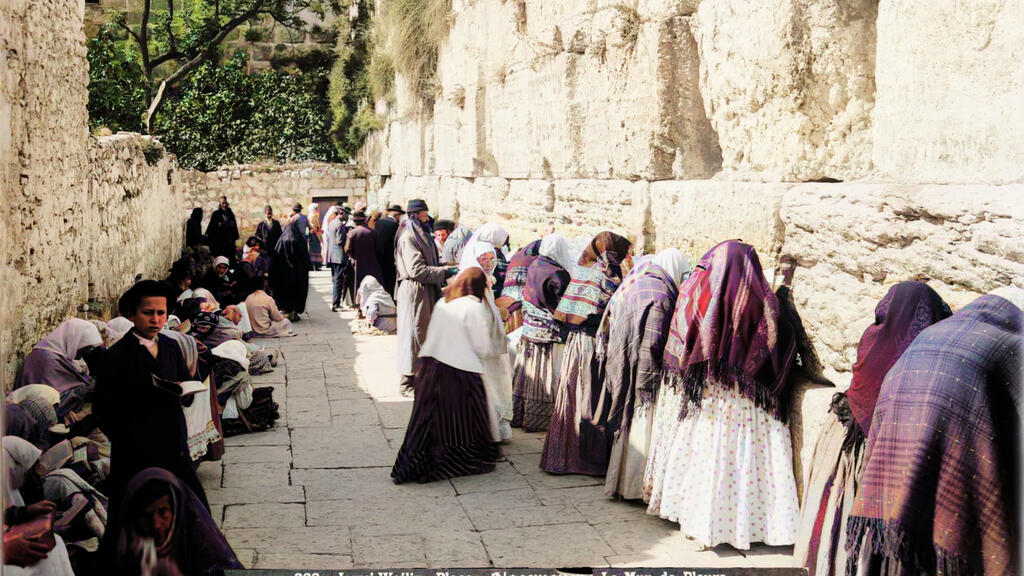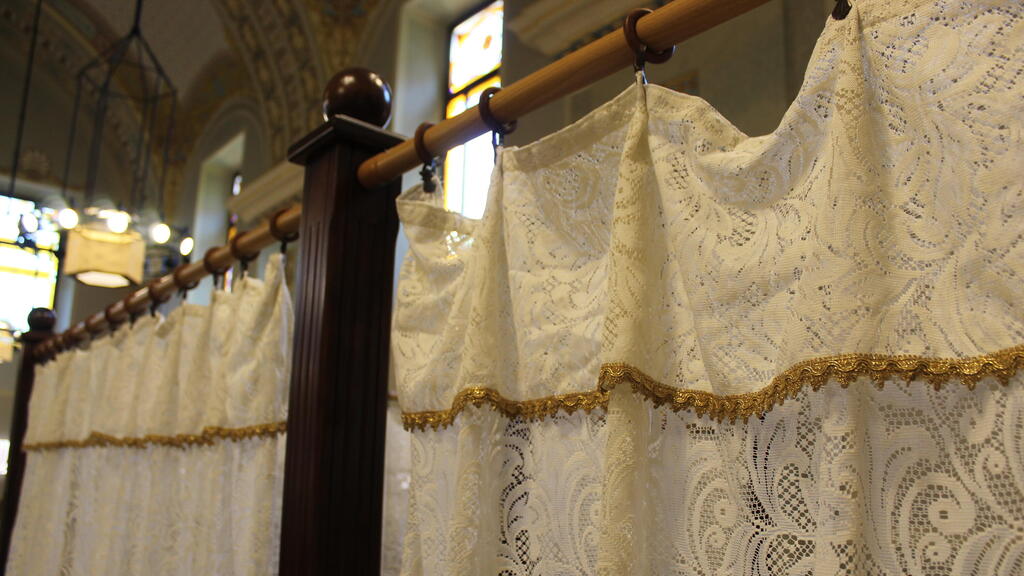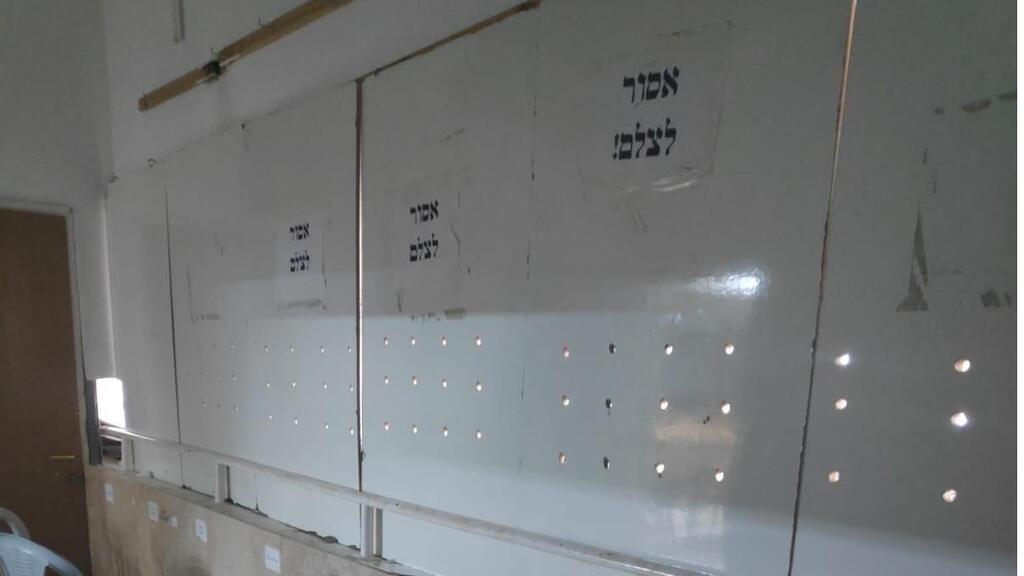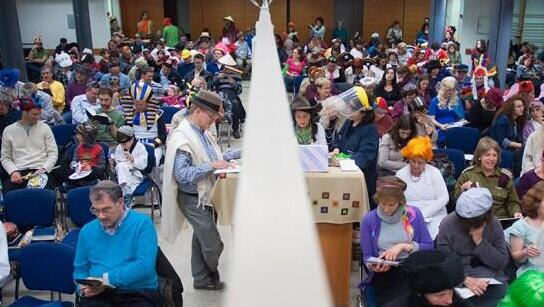"The issue of women's place in the synagogue, both physically and spiritually, remains a significant topic in halachic literature," says Rabbi Dr. Avraham Stav, a prominent author of works on Jewish law, or halacha. Stav points out that in the works of the Rambam, Shulchan Aruch (Code of Jewish Law), and other canonical Halakhic texts, there is an almost complete disregard for "the laws of women's section" in the synagogue.
Read more:
Only isolated references to its existence can be found. The same is true regarding the question of women entering the men's section, which can only be inferred from indirect and isolated references. We know that women did come to the synagogue, even if not in large numbers. There are already stories about such women in the literature of our Sages. However, in recent centuries, it has become quite clear that women should not sit in the men's section.
4 View gallery


Men and women praying together in front of the Western Wall in the early 1920s
(Photo: The American Colony Photo Department, Color: MyHeritage)
But in the Mishna, it is mentioned that in the Holy Temple there was a women's section
In the Mishnah, it is indeed mentioned that there was an "Ezrat Nashim" (women's section) in the Holy Temple. However, there are still debates concerning the specifics of this area, such as whether there was a permanent partition or if it was only present during the celebration of the "Simchat Beit HaShoeivah" (a special celebration during the days of the Sukkot holiday). Additionally, the question of whether women were completely forbidden from entering the men's section remains a subject of discussion.
It appears that the accepted practice in Jewish communities was to have a relatively strict separation in the permanent structure, meaning a separate room entirely or, at most, an elevated balcony. However, there was some flexibility allowing women to enter the men's section occasionally, such as to recite the "HaGomel" blessing or for other specific needs.
The initiative of the ShUM communities
While the Halakhic literature may not provide clear answers, history contains numerous references regarding the status of women in the synagogue and the traditions that evolved within various communities over time. According to Halakhic historian Dr. Akiva Sternberg, in the Babylonian Talmud's tractate Megillah, it is written that a woman can ascend to read from the Torah, but she should not do so "out of respect for the congregation." In other words, to avoid offending those present who might not know how to read.
Despite this ruling, Rabbi Meir of Rothenburg, a prominent 13th-century Ashkenazi rabbi, stated that in a city where there are only Kohanim (priests) who need to be called up to the Torah, it is preferable to call up an Israeli woman rather than a Kohen so that people won't think the treasurer called up the Kohen due to some disqualification, like if his mother was divorced. It is unclear whether this ruling was practically implemented. Nonetheless, such cases and other examples demonstrate that rabbinic leadership in the Middle Ages was willing to consider daring Halakhic innovations, even if they were uncertain whether they would be accepted by the majority of contemporary authorities.
About a thousand years ago, "ShUM" communities emerged along the banks of the Rhein River, consisting of the cities of Shpira, Warmaisa and Magentza (modern names: Speyer, Worms and Mainz). In this region, prominent Ashkenazi rabbis resided, establishing yeshivas and making significant Halakhic innovations.
One of these notable innovations occurred in Worms in 1175 when a synagogue was established, and in 1213, a women's section was added - a separate room adjacent to the men's section. The structure still exists today, and on one of its walls, an inscription in Hebrew is engraved, indicating that Meir bar Joel "built it for prayer - for women who trust in God."
The establishment of a women's section in synagogues carries a dual significance. On one hand, it necessitates a separate area for women, distinct from the men's section. On the other hand, during the Middle Ages, the phenomenon of "women's synagogues" was widespread among Ashkenazi Jews. In these synagogues, women prayed individually in Yiddish rather than in Hebrew. The creation of a women's section also serves as an invitation for them not to remain at home or pray solely with other women but to be present during prayers and Torah reading, even if active participation, such as reading from the Torah, was not permitted, as was partially accepted during Talmudic times.
The struggle for partition in the women's section
One of the prominent differences between Sephardic and ultra-Orthodox Ashkenazi synagogues is the women's section. In Sephardic synagogues, women often observe the men from the same floor without a partition. When they share the same level, there is usually a transparent curtain or half-partition between the men and women, which is sometimes pulled aside during significant events, such as a bar mitzvah or when the groom is called up to the Torah.
In contrast, in contemporary ultra-Orthodox synagogues, the separation between genders is absolute, typically with a sturdy partition featuring small peepholes that allow women to observe without being seen.
The origin of placing a partition in synagogues is not clear. The Book of Samuel I describes how the priest Eli saw Hannah praying in the Tabernacle and mistakenly assumed she was drunk. The fact that the priest could see Hannah during her prayer suggests that in ancient times, there was no separation between men and women during prayer, either by dividing the levels or using a partition.
Surprisingly, even Rabbi Moshe Feinstein, a prominent Haredi authority in the United States during the last century, ruled that in a casual meeting that is not considered a formal gathering, there is no obligation to separate men and women.
However, concerning prayer in the synagogue, he argued that there is a Torah obligation to establish separation. According to his opinion, it is preferable for women to sit on a higher level than men. Still, if that is not possible and they sit on the same level, a partition of about one and a half meters high, approximately up to shoulder level, is sufficient, even though men can partially see the women sitting in their designated area. Over time, in the Haredi community, the partitions between men and women were raised and made more opaque.
In 1845, a storm swept through the Jewish world when, for the first time, the partition between men and women was removed in the Reform community of Berlin. In the United States, this occurred in 1851, within the Reform congregation of Albany, New York, and later, the initiative spread to the Conservative movement in the U.S. Subsequently, women began to serve as cantors and Torah readers in these denominations.
However, the Orthodox stream of Judaism remained steadfast in maintaining the separation between men and women, with men continuing to lead the prayers and read from the Torah, while women remained passive participants.
The women's revolution
According to Prof. Ronit Irshai, the head of the Gender Studies Program at Bar-Ilan University, in the 1980s, even within the Orthodox stream, slow changes began to emerge. In both the United States and Israel, women's prayer groups started forming. These groups prayed together, separate from men, read from the Torah on Shabbat and holidays, but did not recite the traditional blessing before and after the Torah reading. However, the initiative did not gain much momentum and largely disappeared, except for Purim, where women read the Book of Esther in the presence of an all-female audience.
Also, during Simchat Torah, there are religious-Zionist women who refuse to settle for watching men dance and perform the customary Torah processions. Instead, they themselves dance with Torah scrolls and even read from the Torah.
One of the well-known prayer groups is "Nashot HaKotel" (Women of the Wall). While this group did not attract many religious women, it did accelerate the establishment of shared minyanim.
When did the phenomenon of shared minyanim begin?
The phenomenon of shared minyanim, also known as "equal minyanim," began in 2002 when the community of "Shira Hadasha" was established in the Baka neighborhood of Jerusalem. This community chose to conduct prayer services with the inclusion and joint participation of both men and women while adhering to Halakhic principles. Prior to that, there was another community called "Kehillat Yedidya" in Baka, but women were not actively included in the communal prayer.
The model of "Shira Hadasha," to which I also belong, became a template, and now there are approximately 50 similar minyanim in various locations across the country.
It is essential to emphasize that unlike women's-only minyanim held in separate rooms from men's prayers, in a partnership minyan, both men and women are in the same prayer hall but sit separately, with a partition separating them. During Friday evening services, there are occasions when a male cantor leads, and sometimes a female cantor leads. Similarly, Torah readings are done by both men and women at different times.
It is important to emphasize that although the Haredi and Haredi-nationalist streams may refer to us as Reform, all these changes were made after thorough, foundational, and profound halakhic clarification. They have even received a halakhic endorsement from Rabbi Prof. Daniel Sperber.




